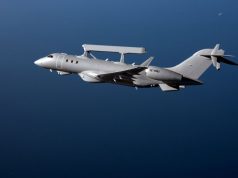The Royal Canadian Navy has awarded Saab a contract for the delivery of multi-role Sea Giraffe AMB naval radar antenna sets for the upgrade of its Halifax-class frigates.
According to the company, the contract is worth SEK 300 million (approx. $32.8M), and includes associated equipment and spare parts. This is a follow-on order to a contract announced in 2018, when the RCN first ordered the antenna sets for the frigates. Back then, the government said it had the ability of exercising an optional 12 sets, which would bring the total value of the project to around $75 million dollars.
“The upgrade is based on the customers’ requirement to sustain the service life and enhances the performance of the Halifax Class frigates. The work will be carried out in Halifax, Canada and Gothenburg, Sweden, starting this calendar year and continuing through 2026,” Saab said in a release.
In addition to the Halifax-class frigate, Sea Giraffe will also be carried by the Canadian Protecteur-class Joint Support Ships.
“This order has further strengthened our Sea Giraffe radar market position and continues the excellent partnership that Saab enjoys with the Royal Canadian Navy”, says Carl-Johan Bergholm, head of Saab’s Business Area Surveillance.
Sea Giraffe AMB is a multi-role 3D surveillance radar system for naval applications. It provides medium range, simultaneous air and surface surveillance and has a weapon designation capability. It is suitable for demanding naval environments from the littorals to blue-water operations.
The contract for Saab is the latest in a series of investments the Canadian defense ministry is undertaking in an effort to keep the frigate operationally-relevant until the new Canadian Surface Combatant ships start arriving in late 2020s. The Halifax-class is expected to continue service into the early 2040s, when the oldest of the 12 ships will be around 50 years old.



























